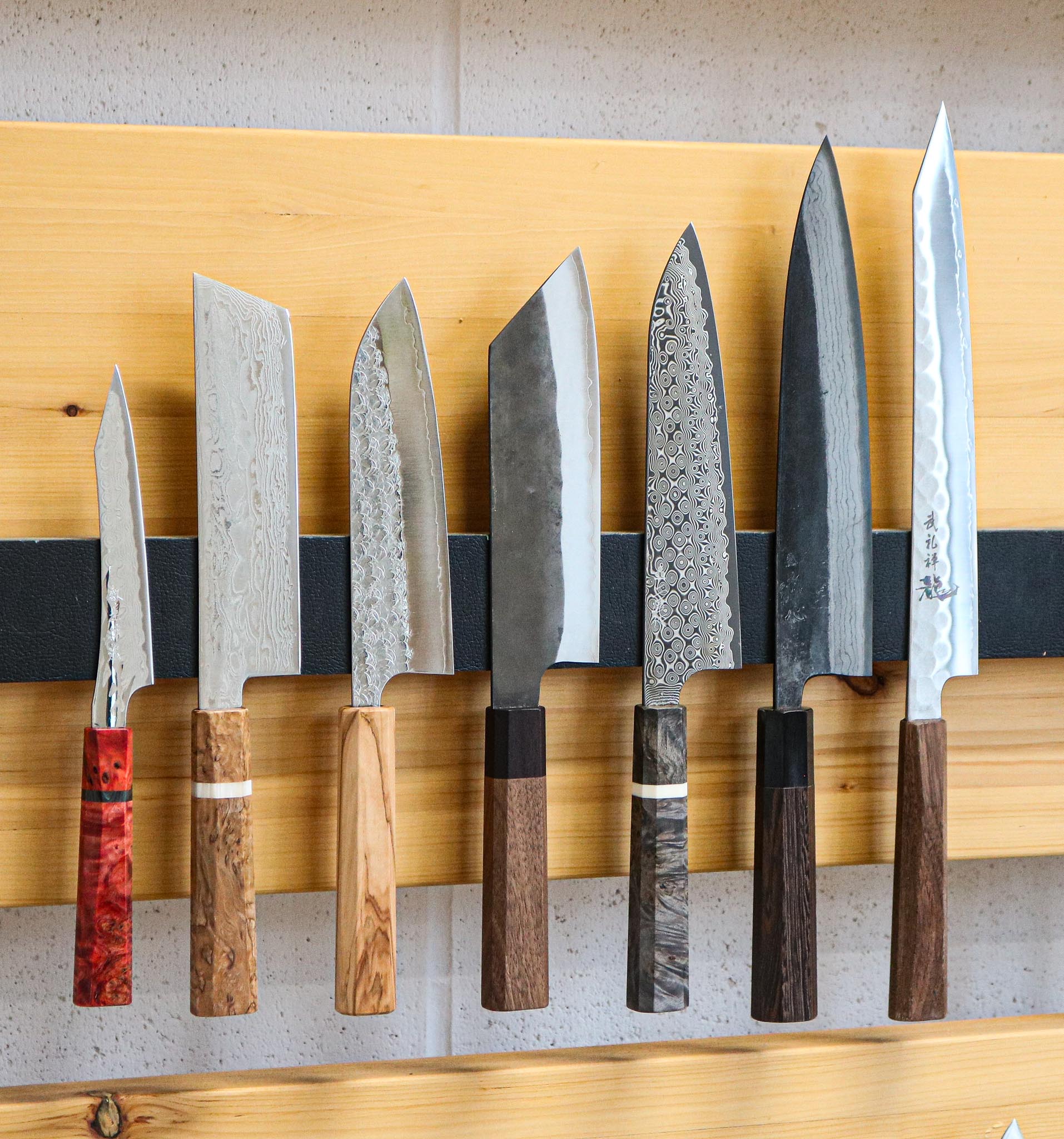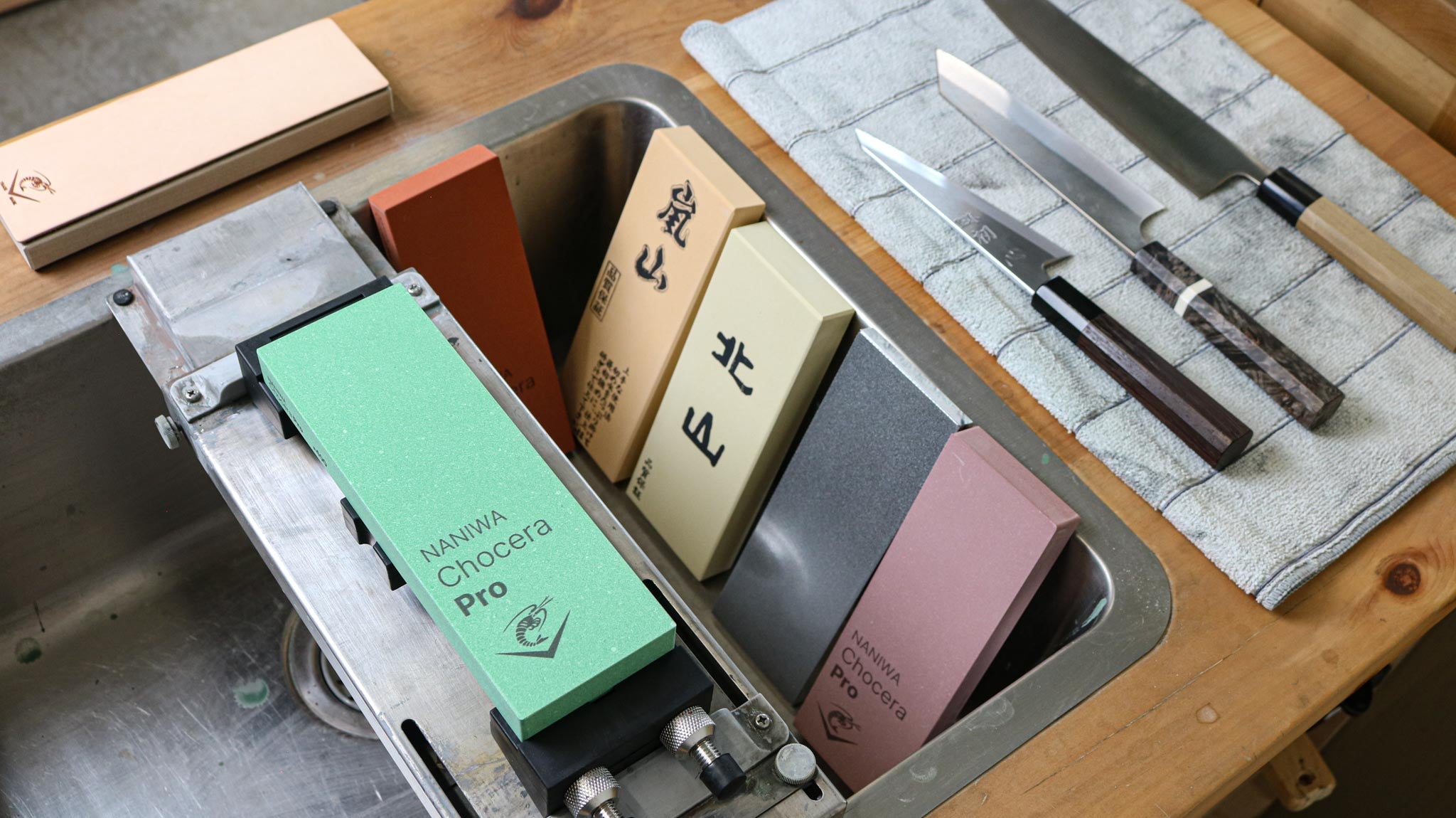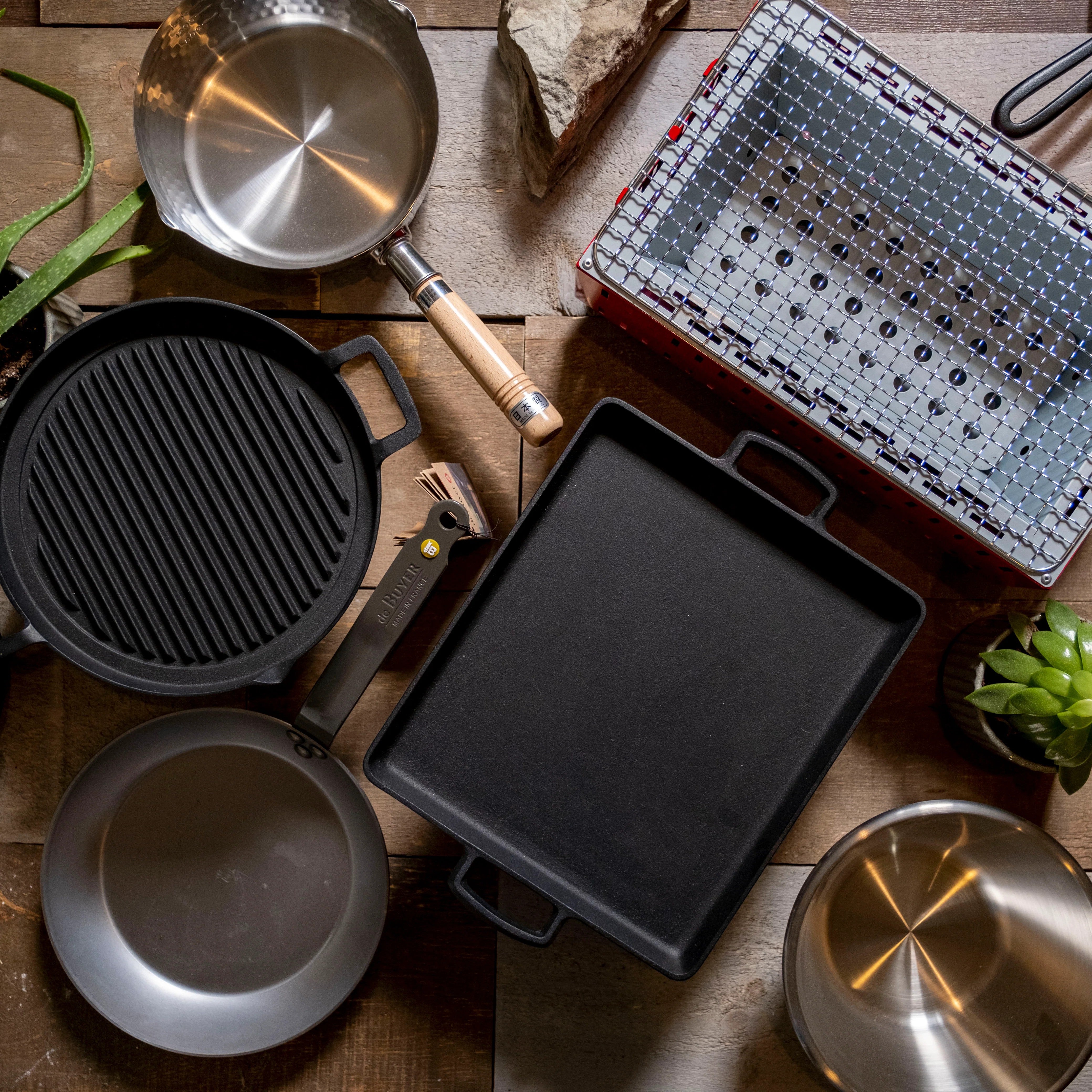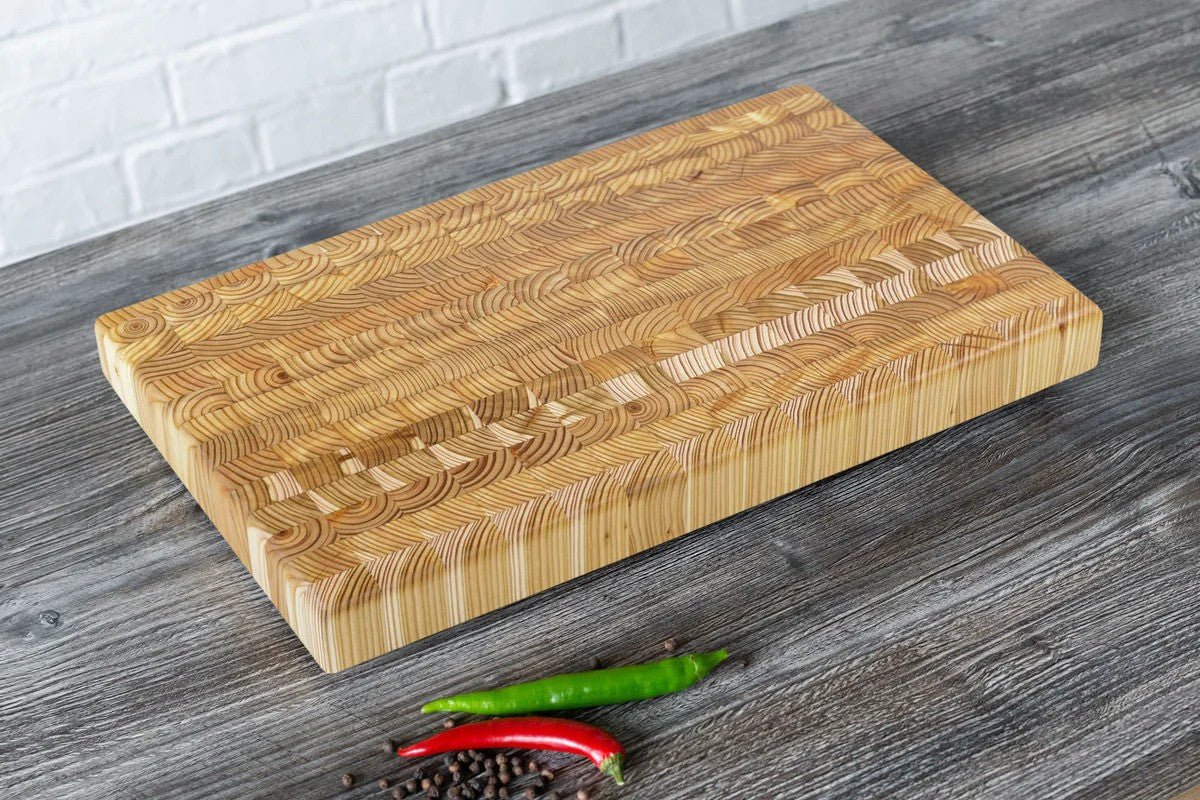Menu

Types of Knives and what they're for
All the Different sizes and shapes can lead people to get confused about which knife is right for them. Watch the below video or read this post to get a better understanding which is right for you!
Petty Knife
Petty knives range in size from 80 mm up to 160 mm and are used as a general-purpose knife geared more towards smaller tasks like brunoised garlic and onion. They also function great as a butchery knife; chickens and other poultry, rabbits and other small game are all well within its capabilities. They are incredibly handy for professional cooks who need a versatile knife when they’re on-line during service but are short on space. For home cooks they’re a great option to keep on the counter all day to cut up fruit and any other small miscellaneous tasks during the day.
Nakiri (Vegetable Clever)
Nakiri translates directly to thin knife; you can find them in sizes ranging from 135 mm up to 190 mm. They are used to chop vegetables and feature a tall blade that provides lots of space for the blade to slide along the knuckle of the user while using an up and down chopping motion. To further aid with this style of chopping, Nakiri’ have a very flat profile, meaning there is little curve in the blade. This flat profile means almost the entire blade contacts the board when chopping making that annoying phenomenon of ingredients remaining attached to one another a thing of the past. They also feature a flat spine that can be used to scrape ingredients together into neat piles then using its large surface area one can easily scoop ingredients onto the knife and move them wherever one desires.
Santoku (All purpose home chef knife)
Santoku are probably the most popular style of knife for home cooks in Japan and are gaining popularity in the western world as well. Santoku translates to “three virtues” which refers to slicing, dicing and chopping; pretty much everything you’re going to do in a kitchen on a day to day basis. They are one of, if not, the most versatile style of Japanese knife and one we recommend most to first time Japanese knife buyers. They range in size from 135 mm up to 190 mm and also feature a relatively flat profile making them great for chopping, but function quite well using a rocking motion too. Because of their smaller size they are quite nimble and can be used to complete many smaller tasks while still remaining an adequate size to complete many larger tasks as well. If you’re looking for one, go-to knife, seriously consider a Santoku.
Gyuto (all purpose professional chef's knife)
If you’re new to the Japanese knife world a Gyuto is probably the most recognizable style to you. It is very similar in size and shape to a standard western style chefs knife and will often have a more curved profile making it easy to use a rocking motion with. They range in size from 180 mm all the way up to 300 mm. Gyuto's are very versatile and are perfectly capable of chopping vegetables and herbs as well as slicing meat, however due to there generally larger size they can feel a bit cumbersome when performing smaller more intricate tasks. This is another style we highly recommend to the first time Japanese knife buyer.
Sujihiki (Slicing Knife)
Sujihiki translates to flesh slicer, aptly named as they are used for just that, slicing meat. They are quite short in terms of there height from the heel of the knife to the spine which reduces friction, making for a more enjoyable slicing experience. They range in size from 210 mm to 300 mm; this long blade allows the user to make long strokes through the ingredient and eliminates the need for a sawing motion. This technique will allow you to achieve perfect, thin slices of meat without having to use a sawing motion which creates undesirable marks in the protein. Sujihiki are far less versatile than the aforementioned styles but their ability to perform slicing tasks is unparalleled.
- Choosing a selection results in a full page refresh.






